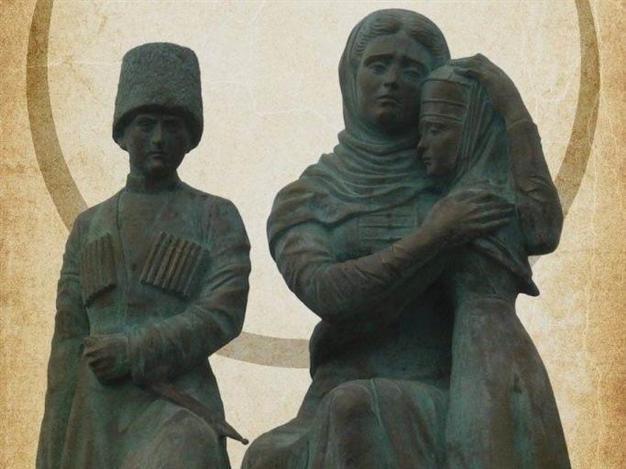‘The Circassian Genocide’
William Armstrong - william.armstrong@hdn.com.tr
 'The Circassian Genocide' by Walter Richmond (Rutgers University Press, $30, 218 pages)
'The Circassian Genocide' by Walter Richmond (Rutgers University Press, $30, 218 pages)Russia took a battering in the foreign media in the lead up to the Sochi Winter Olympics. Such was the avalanche of stories on political repression, corruption, and homophobia that the concerns of the Circassians – massacred and driven out of their ancestral homeland around Sochi in the 19th century – were largely drowned out. This book by Walter Richmond, a specialist on the history of the Caucasus, is the most comprehensive account in English of the Circassians’ catastrophe, in which hundreds of thousands were killed by Russian forces and hundreds of thousands more were driven away to be forcibly resettled in the Ottoman Empire. It’s a relentlessly grim read, which perhaps isn’t a surprise considering one of the slogans hurled at athletes by the diaspora-based “No Sochi” campaign: “YOU’LL BE SKIING ON MASS GRAVES.”
Sandwiched in the rugged mountains between the expansionist empires of Tsarist Russia and Ottoman Turkey, the Circassians were one of the predominant ethnic groups in the patchwork of the North Caucasus. They were Sunni Muslims, but combined Islam with traditional local animist customs and remained fiercely protective of their independence from central authority. Occupying a strategically crucial 200 miles of Black Sea coastline east of the Crimea, the Circassians started to receive unwanted attention when the Russian state began its push south through the Caucasus in the 18th century. The word “Circassian” comes from the Mongol word for “one who blocks a path,” and that’s fitting for how the Russians viewed them. As Richmond writes: “Ever since Peter the Great set his eyes in conquest of Iran, Russia’s rulers stopped looking at the peoples of the North Caucasus as neighbors and began treating them as subjects waiting to be conquered.”
Two treaties tightened the screws in the 19th century: The Treaty of Adrianople (1829) that concluded the Russo-Turkish War and the Treaty of Paris (1856) that ended the Crimean War. Between them, they finally determined the whole North Caucasus as Russian territory and essentially granted St. Petersburg the authority to do there as it wished. For the Europeans, Circassia remained little more than a strange land of semi-civilized mountain warriors and mystical beauties - little to engage the emotions and easy to ignore. Both the British and the Ottomans pondered military support at various times, but neither ever followed through, and the Circassians were ultimately left to the mercy of the advancing Russians.
So began a massive, concerted campaign of village destruction and massacre in the name of “pacification,” with Cossacks being settled in the Circassians’ place. They put up some resistance, but the Circassians ultimately couldn’t withstand the series of fatal blows delivered between 1860 and 1864. Those who managed to escape death spilled down to the coast for deportation to the Ottoman Empire; overall, Richmond estimates that around 625,000 died in the operations and 600,000-800,000 were deported. Russian officer Ivan Drozdov expressed the brutal logic of the military forces in the area, asking: “Would it be possible to have a half-savage republic within the borders of the empire?” After decades of dealing the Circassians little more than wholesale destruction, pillaging, and acts of gross inhumanity, the answer to that question had long been decided.
The Ottomans hoped that the survivors who made it across the Black Sea could colonize undeveloped parts of Anatolia, increase agricultural development, and provide extra tax revenue. But capacity lagged far behind theory, and the experiences of Circassians in the Ottoman Empire were often just as miserable as where they came from. In particular, the unfortunates who were sent to the Balkans – by an empire looking to reinforce its Muslim demographic in Eastern Europe – were soon driven out along with the Turks during the Russo-Turkish War of 1877-78. Today, 150 years after they were finally forced from their homeland, Circassian communities are scattered across the post-Ottoman lands of Israel, Jordan, Turkey and Syria. In the North Caucasus itself, even after a century and a half of population growth, there are only 650,000 Circassians: Approximately half the 1860 population.
This is a relatively slim book - less than 180 pages plus endnotes – and the reader would perhaps benefit from a deeper perspective locating the events more securely within the history of Imperial Russia’s state development. As it is, the narrowly local focus can be slightly claustrophobic, giving little sense of why certain steps gained particular justification at particular times. Nevertheless, this is still a valuable book. It’s not a comfortable read, but it’s a useful reminder that while the new sports infrastructure and holiday accommodation will remain after the media fanfare has departed Sochi 2014, so will the mass graves.
Notable recent release

(Hurst, £30, 244 pages)










